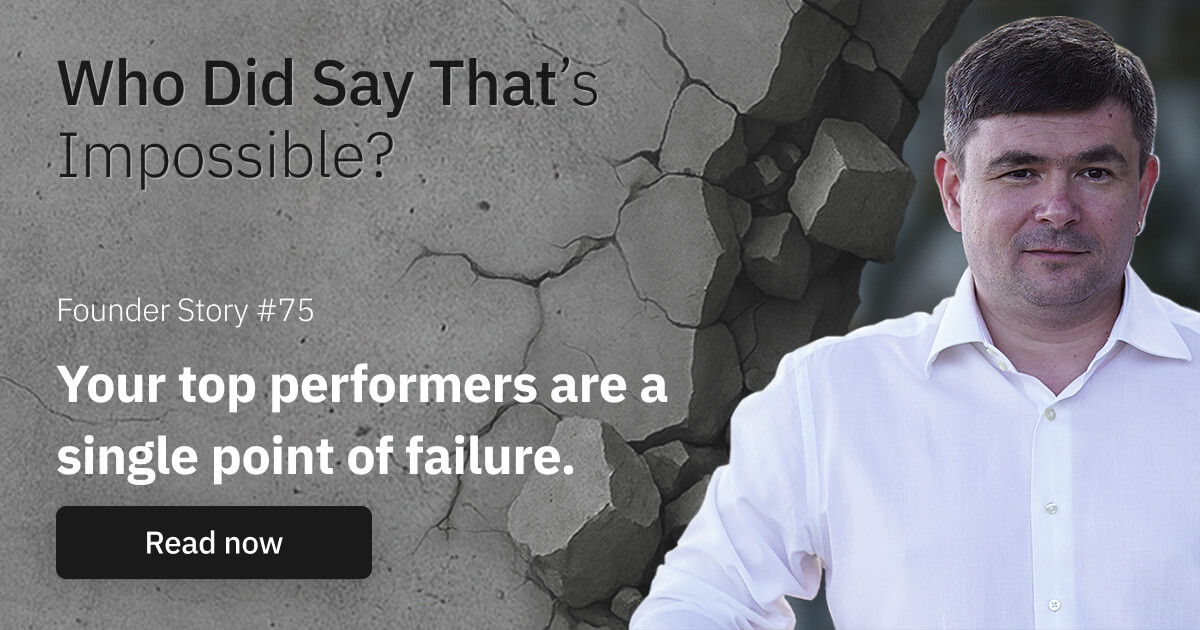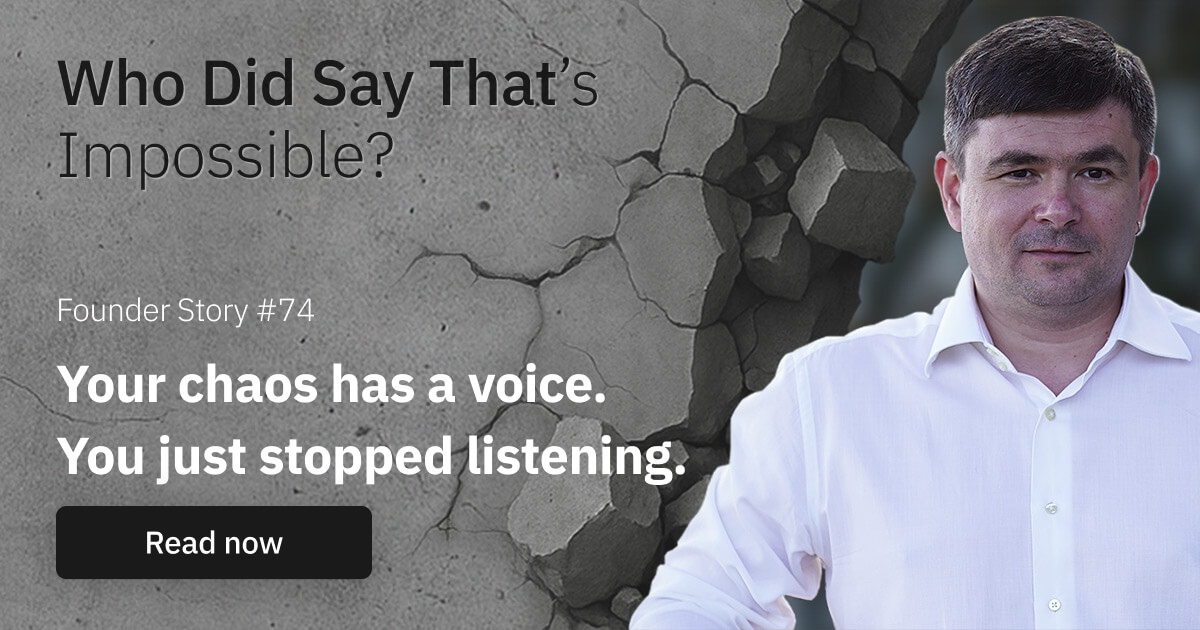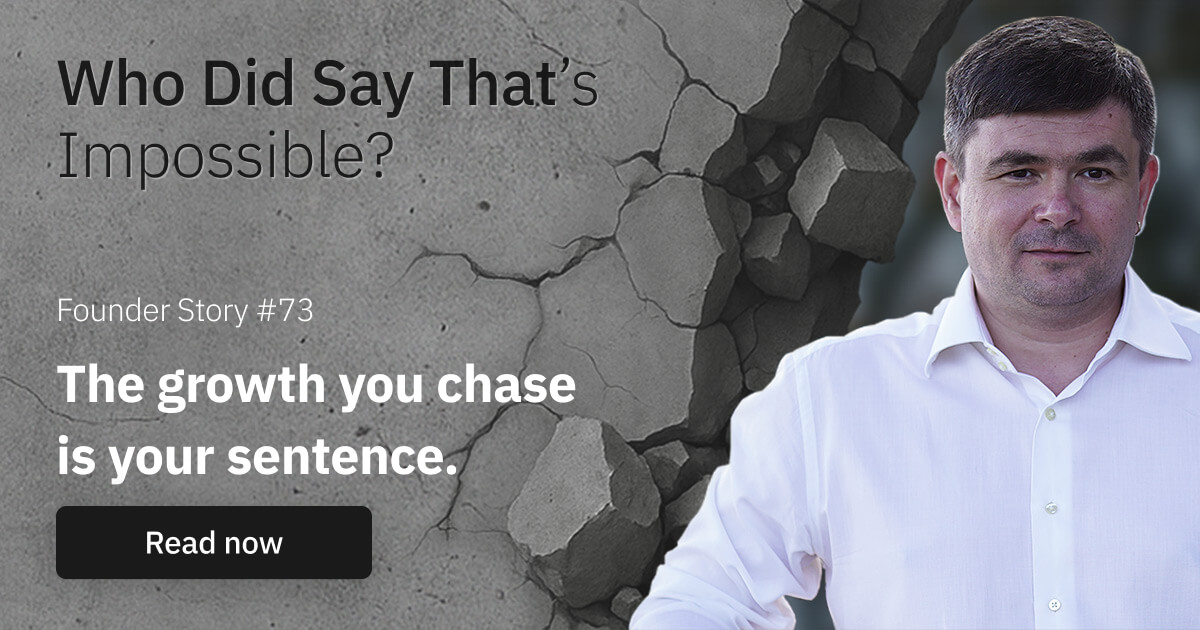Growth isn’t the goal. Resilience is.
Or minute of chasing scale, only to lose your soul
In the early years of my entrepreneurial journey, I carried a quiet shame.
We were a small agency. Ten people. Maybe fifteen on a good year.
And no matter how well we delivered, no matter how hard we worked, I couldn’t shake the feeling that we weren’t a “real” business. Just when things were finally starting to work out, some crisis or random mess would hit, and we’d shrink back again.
I remember sitting in our old office. Desks empty after another wave of layoffs.
It was 2012. The 2008 crash finally caught us and hit hard.
I felt ashamed.
Because everywhere I looked, others were scaling.
50 people. 70. 100. New cities. Fancy glass offices. Media interviews.
They looked like real founders.
And I kept asking myself — what am I doing wrong?
I was envious — and I hated that I was.
I imagined their salaries. Their lives. Pictured the money pouring in while I was scraping to make payroll.
I was young. Hungry. And stupid.
So I made a decision: I would catch up. No matter what it took.
The high of growth
I threw everything into that pursuit.
Courses. Conferences. Sales workshops.
I paid for consultants, trained the team, hired aggressively.
And it worked.
We grew fast.
Opened new offices, launched new services, closed larger deals.
I felt like I had finally crossed into legitimacy.
I was no longer “just a small founder.”
I was building something big.
But here’s the part no one likes to talk about.
- The endless payroll stress
- The silent churn of culture
- The meetings that solve nothing
- The people problems you’re not equipped to handle
- The systems that barely hold together, duct-taped with urgency
When you scale without a solid foundation, you don’t build a company, you build a pressure system.
Every new hire brought new complexity.
Every client came with more operational risk.
I wasn’t a finance guy, but I had to become one.
Because suddenly, every decision was tied to costs I never used to think about:
Labor. Taxes. Software. Gear. Legal. Infrastructure.
I learned what P&L meant by living inside one.
And no matter how fast we hired or how hard we worked, everything still ran through me.
Somewhere between the back-to-back interviews and late-night fire drills, I realized:
I had built a machine that could only run if I kept pedaling.
Every new hire needed handholding.
Every new client felt like another fire.
Every department was pulling in its own direction.
The turning point
And then I met a founder who changed everything.
He showed me the inside of his company.
Clear roles.
Transparent systems.
Documented processes.
No chaos.
No micromanagement.
It ran smoothly and he wasn’t in the weeds.
That moment hit me hard.
You can build something that works without consuming you.
But I had built something that ran on my attention. My presence. My sacrifice.
Even the systems I had were just coping mechanisms.
I didn’t need more scale.
I needed structure.
Well... that’s where all the fairy tales end – “and they lived happily ever after.”
And sure, I got my playbook for building a sustainable business.
But that didn’t stop me from wanting more.
At some point, I remember walking past a group of new hires.
I didn’t know their names. That wrecked me.
Back when we were small, I knew everyone’s stories.
We celebrated birthdays. Took trips together. I knew their kids’ names.
Now, I was the ghost founder.
Avoiding the office. Avoiding calls. Avoiding the thing I’d spent years building.
Fantasizing about selling the whole thing and disappearing into a cabin for a year.
Anything that would give me a way out.
Not because I was buried in endless work and firefighting.
But because, as it turns out, size and why matter even more than structure.
Because everything should be built around that. It’s the root of it all.
What I built no longer felt like mine.
The truth no one shares
Founders love to talk about scale.
Growth. Expansion. But what they don’t talk about, what they’re afraid to admit, is this:
You can grow a company that looks impressive from the outside…
while quietly dying on the inside.
Not just the business.
You.
The question I wish I asked earlier
If you’re growing — stop and ask:
Are you building something that lasts and aligned with your why…
or just something that gets bigger?
Because there’s a difference.
One gives you peace.
The other drains you until you burn out, or blow up.
Disclaimer.
Every business has its nuances, and every founder has their unique context and resources. Whether or not my advice applies depends on your situation, experience, and needs. But one thing is universal—use your brain.
Think about how to apply the advice in your context before acting.
Your way.
- Eugene
Join the “most offbeat” Businessletter on entrepreneurship.

Hi, I’m Eugene.
Over the past 20+ years, I’ve grown an international agency from one-person freelance to a multimillion-dollar business. I’ve led teams, scaled systems, burned out, rebuilt, and learned (the hard way) what it really takes to run a business that doesn’t consume your life.
I help them make sense of complexity, design simple systems, and create the kind of business they actually want to run.
More Stories
Founder Stories

Your top performers are a single point of failure
Or minute of realizing that talent without structure is just borrowed time

Your chaos has a voice. You just stopped listening
Or minute of realizing it’s not about broken communication


